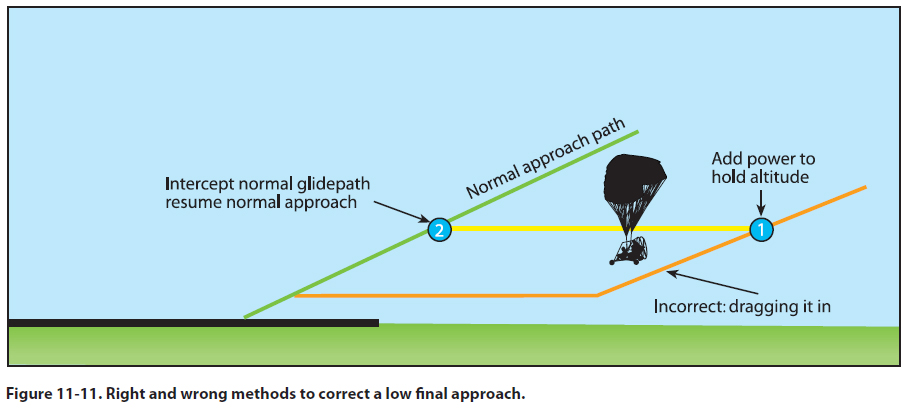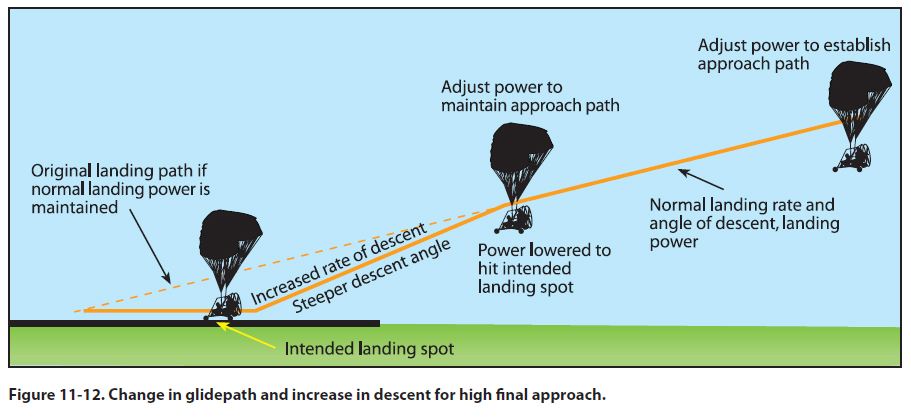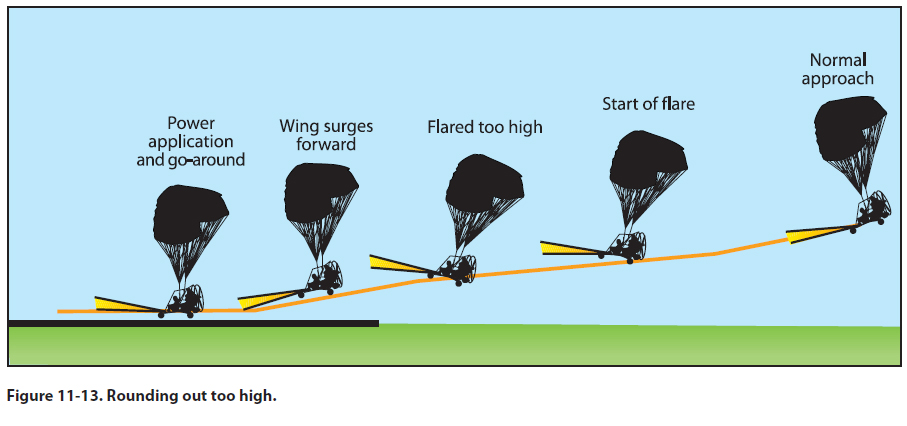|
Chapter 11 — Approaches and Landings
Low Final Approach
When the base leg is too low, insufficient power is
used or the velocity of the wind is misjudged, sufficient
altitude may be lost, which will cause the
powered parachute to be well below the proper final
approach path. In such a situation, you would have
to apply considerable power to fly the powered parachute
(at an excessively low altitude) up to the runway
threshold.
When it is realized the runway will not be reached
unless appropriate action is taken, power must be
applied immediately to stop the descent. When the
proper approach path has been intercepted, the correct
approach attitude should be re-established and
the power reduced and a stabilized approach maintained.
[Figure 11-11] If there is any doubt about the
approach being safely completed, it is advisable to
EXECUTE AN IMMEDIATE GO-AROUND.

High Final Approach
When the final approach is too high, reduce power as
required. [Figure 11-12] When the proper approach
path has been intercepted, adjust the power as required
to maintain a stabilized approach. When steepening
the approach path, however, care must be taken that the descent does not result in an excessively high
sink rate. If a high sink rate is continued close to the
surface, it may be difficult to slow to a proper rate
prior to ground contact. Any sink rate in excess of
800 –1,000 feet per minute is considered excessive. A
go-around should be initiated if the sink rate becomes
excessive.

Use of Power
Power can be used effectively during the approach
and roundout to compensate for errors in judgment.
Power can be added to slow the descent rate to an acceptable
rate. Some pilots use power rather than wing
flare to land smoothly. After the powered parachute
has touched down, it will be necessary to close the
throttle so the additional thrust and lift will be removed
and the powered parachute will stay on the
ground.
High Roundout
It is possible to flare for landing too high above the
ground. [Figure 11-13] If this happens, efforts need to
be made to prevent the wing from surging forward. The
power should not be reduced and the flare should only
be reduced slightly or the wing could surge forward
as the pendulum starts swinging back. Some pilots try
to correct this situation by reducing the throttle too
much and letting off the flare completely in order to
land closer to their chosen landing point. This invariably
results in the cart rotating back under the forward
surging wing and diving towards the ground because
lift has been dramatically reduced. Any surging forward
of the wing above the cart should be slowed by
increased flare. If the flare is performed too high off
the ground, a go-around can be accomplished.

It is recommended that a go-around be executed any
time it appears that there may not be enough runway
to safely land the powered parachute or if the landing
is in any other way uncertain.
|

